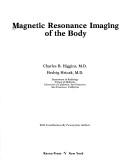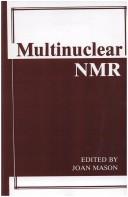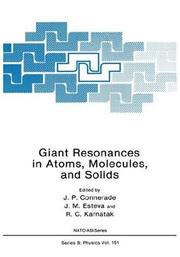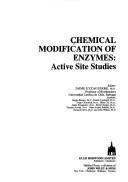| Listing 1 - 10 of 28 | << page >> |
Sort by
|
Book
ISBN: 9783137017011 3137017017 Year: 1987 Publisher: Stuttgart: Thieme,
Abstract | Keywords | Export | Availability | Bookmark
 Loading...
Loading...Choose an application
- Reference Manager
- EndNote
- RefWorks (Direct export to RefWorks)

ISBN: 088167284X Year: 1987 Publisher: New York, NY : Raven Press,
Abstract | Keywords | Export | Availability | Bookmark
 Loading...
Loading...Choose an application
- Reference Manager
- EndNote
- RefWorks (Direct export to RefWorks)
NUCLEAR MAGNETIC RESONANCE --- NUCLEAR MAGNETIC RESONANCE --- DIAGNOSTIC USE --- METHODS --- NUCLEAR MAGNETIC RESONANCE --- NUCLEAR MAGNETIC RESONANCE --- DIAGNOSTIC USE --- METHODS
Book
ISBN: 0387963278 3540963278 Year: 1987 Publisher: New York (N.Y.) : Springer,
Abstract | Keywords | Export | Availability | Bookmark
 Loading...
Loading...Choose an application
- Reference Manager
- EndNote
- RefWorks (Direct export to RefWorks)
Liquids --- Solids --- Fourier transform nuclear magnetic resonance spectroscopy. --- Spectra. --- Spectra.
Book
ISBN: 0080348521 Year: 1987 Publisher: Oxford Pergamon
Abstract | Keywords | Export | Availability | Bookmark
 Loading...
Loading...Choose an application
- Reference Manager
- EndNote
- RefWorks (Direct export to RefWorks)
Analytical geochemistry --- Energy minerals --- Nuclear magnetic resonance --- Soil chemistry --- Analysis

ISBN: 0306421534 1461289998 1461317835 9780306421532 Year: 1987 Publisher: New York, NY : Plenum Press,
Abstract | Keywords | Export | Availability | Bookmark
 Loading...
Loading...Choose an application
- Reference Manager
- EndNote
- RefWorks (Direct export to RefWorks)

ISBN: 0306425645 1489920064 1489920048 Year: 1987 Volume: vol 151 Publisher: New York London Plenum Press
Abstract | Keywords | Export | Availability | Bookmark
 Loading...
Loading...Choose an application
- Reference Manager
- EndNote
- RefWorks (Direct export to RefWorks)
Nuclear magnetic resonance, Giant --- Atomic spectra --- Atomic theory --- Molecular spectra --- Solids --- Congresses. --- Spectra --- Nuclear magnetic resonance [Giant ] --- Congresses
Book
Year: 1987 Publisher: München : Friedrich-Alexander-Universität Erlangen-Nürnberg,
Abstract | Keywords | Export | Availability | Bookmark
 Loading...
Loading...Choose an application
- Reference Manager
- EndNote
- RefWorks (Direct export to RefWorks)
Chemical kinetics. --- Epoxy resins --- Isocyanates --- Nuclear magnetic resonance --- Spectroscopic analysis --- Amines --- Addition reaction --- Epoxy resins --- Isocyanates --- Nuclear magnetic resonance --- Spectroscopic analysis --- Amines --- Addition reaction
Book
Year: 1987 Publisher: [São Paulo] : Editoria da Unicamp,
Abstract | Keywords | Export | Availability | Bookmark
 Loading...
Loading...Choose an application
- Reference Manager
- EndNote
- RefWorks (Direct export to RefWorks)
NUCLEAR MAGNETIC RESONANCE SPECTROSCOPY --- ORGANIC CHEMISTRY --- ORGANIC COMPOUNDS --- SPECTRUM ANALYSIS --- ANALYSIS --- NUCLEAR MAGNETIC RESONANCE SPECTROSCOPY --- ORGANIC CHEMISTRY --- ORGANIC COMPOUNDS --- SPECTRUM ANALYSIS --- ANALYSIS
Book
ISBN: 0521321123 Year: 1987 Publisher: Cambridge New York : Cambridge University Press,
Abstract | Keywords | Export | Availability | Bookmark
 Loading...
Loading...Choose an application
- Reference Manager
- EndNote
- RefWorks (Direct export to RefWorks)
This book provides a complete exposition of the theory of nuclear magnetic relaxation caused by the thermal motion of the molecule containing the relaxing nucleus. The author begins by defining the physical quantities encountered in nuclear magnetic resonance studies and surveying pioneering investigations in the field. Nuclear magnetic relaxation by scalar, dipolar, quadrupolar and spin-rotational interactions and by anisotropic chemical shift are then examined in detail. Relaxation rates are expressed in terms of spectral densities, and the values of the spectral densities for various molecular shapes are calculated by random walk or Brownian motion dynamics. The text should be within the grasp of readers who have taken undergraduate courses in electromagnetic theory and in classical and quantum mechanics, although topics in these fields of particular relevance are to be found in appendices. This book will be of value to postgraduate students and research workers using n.m.r. in physics and physical chemistry departments, and by scientists in industrial and medical research.
Liquids --- Relaxation phenomena. --- Nuclear magnetic resonance. --- Random walks (Mathematics) --- Diffusion processes. --- Magnetic properties. --- Random walks (Mathematics).

ISBN: 0745800238 Year: 1987 Publisher: Chichester : Ellis Horwood,
Abstract | Keywords | Export | Availability | Bookmark
 Loading...
Loading...Choose an application
- Reference Manager
- EndNote
- RefWorks (Direct export to RefWorks)
Enzymes --- Research --- Methodology. --- Structure. --- Enzymology --- Molecular structure. --- Nuclear magnetic resonance. --- Affinity --- Photochemistry --- Reaction kinetics
| Listing 1 - 10 of 28 | << page >> |
Sort by
|

 Search
Search Feedback
Feedback About UniCat
About UniCat  Help
Help News
News